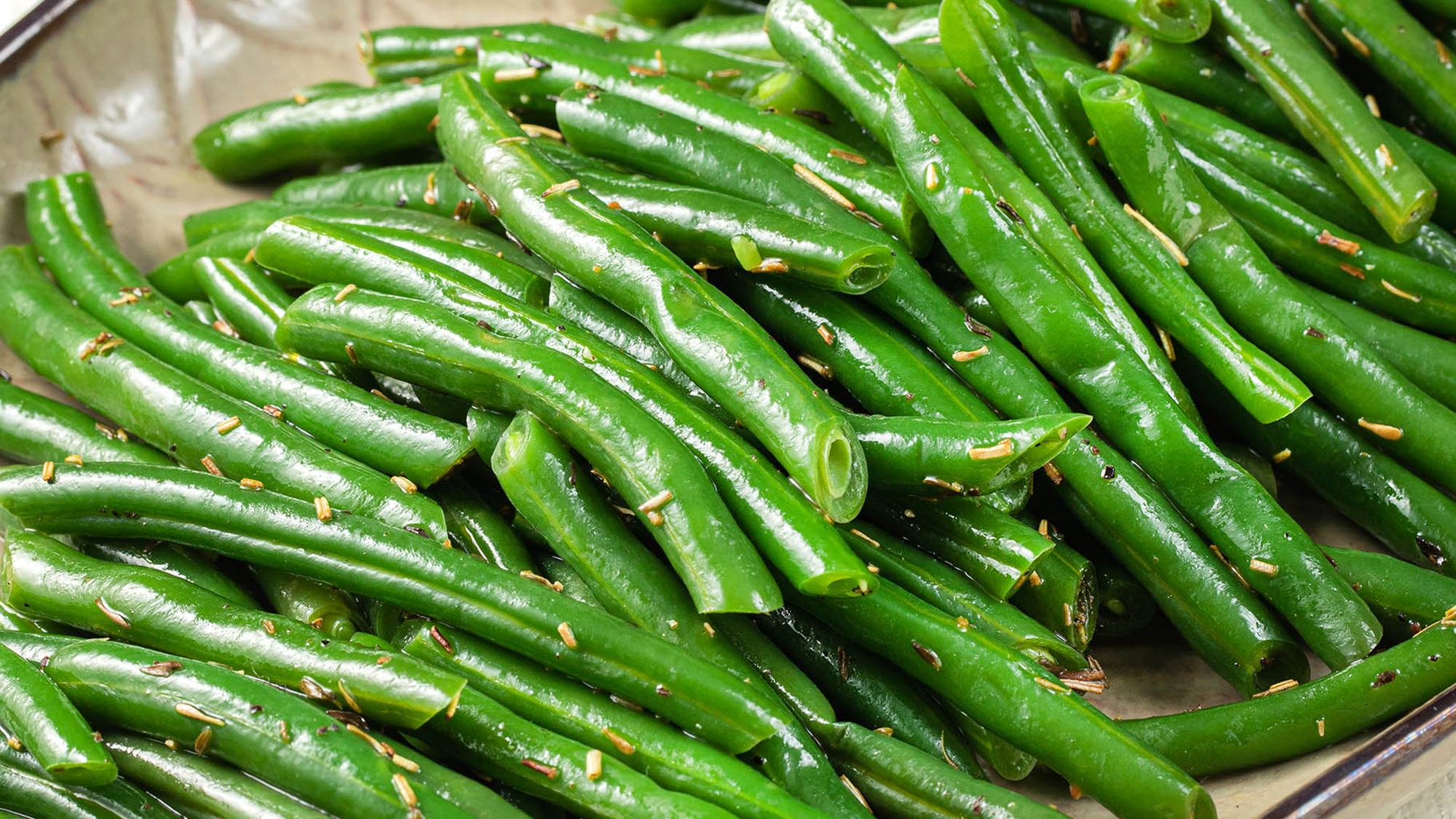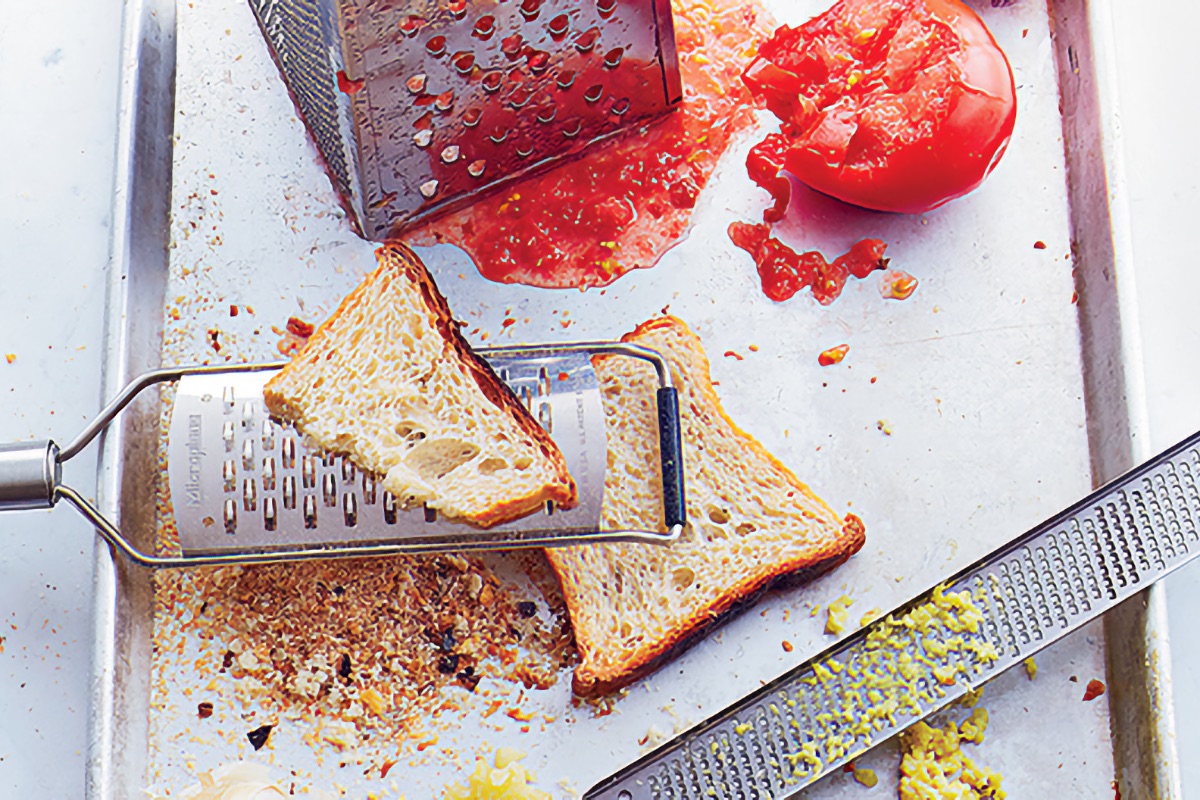The plant’s tiny leaves — just a quarter inch at most in length — must be carefully harvested, cleaned, dried and milled to retain their rich color, piney aroma and earthy flavor. In the ancient world, thyme was a symbol of courage and bravery. One of the highest compliments to pay a Greek warrior, for instance, was to say he smelled of thyme. And in the Middle Ages, thyme was used to fend off nightmares. Today, our pure thyme holds its greatest place of honor in the kitchen as one of our most popular herbs.
WHAT IS THYME?
Thyme is a remarkably adaptable herb that’s commonly found in the culinary traditions of French, Middle Eastern, Mediterranean and Italian cuisines. Whether used fresh or dried, thyme leaves are fantastic for elevating a variety of dishes, including pasta, soup, roasted vegetables, pizza, sauces and proteins like chicken, fish, pork and beef.
WHAT DOES THYME TASTE LIKE?
A member of the mint family, thyme is an aromatic herb that delivers a balanced blend of citrus and mint essence with woody, floral notes. Thyme flavor can be peppery and sweet, sometimes with a clove-like sensation. The taste of thyme’s flavor profile can range from bold to balanced, with an earthy, slightly lemony nuance.
WHAT DOES THYME LOOK LIKE?
In terms of appearance, thyme leaves are small, oval-shaped and grow in pairs along the plant’s stems. Although thyme is typically green in color, certain varieties of thyme may exhibit red or purple leaves.
TYPES OF THYME: GROUND THYME VS. THYME LEAVES
Although ground thyme and thyme leaves are both derived from the Thymus vulgaris plant, they have different forms and flavor characteristics that cannot be replicated by other herbs or spices. Depending on whether you seek a bold punch of earthiness or delicate touch of flavor, these two types each provide different elements to consider, such as:
Ground thyme: This variety of thyme is obtained by grinding dried thyme leaves into a powder that resembles other common spices like garlic powder or paprika. Its texture makes ground thyme a great addition to marinades, rubs and soups. As a result of its concentrated nature, this type of thyme is often more potent in flavor compared to fresh leaves.
Thyme leaves: This type of thyme variety is plucked directly from the stems of the plant. Thyme leaves provide dishes with a subtle earthy essence, making it an excellent choice for sauces, salads and other recipes. Fresh leaves are delicate and low-key in taste, which allows the herb to infuse its flavor without overpowering other ingredients.
HOW MCCORMICK SOURCES THYME:
McCormick thyme begins its journey to your table in the sun-drenched fields of France, Spain and Morocco.
For the very best variety of dried thyme, McCormick sources the leaves of Thymus vulgaris plant. That’s where climate and soil come together to produce the most aromatic and flavorful thyme.
WHAT GOES WELL WITH THYME?
Add even more flavor to your meals with herbs and spices that go with thyme, including:
- Rosemary: Aromatic rosemary adds distinctive Mediterranean flavor to grilled lamb, roast chicken, tomato sauce, roasted vegetables and potatoes.
- Parsley: The feathery leaves of the dill plant add fresh green flavor to lighter dishes such as salads, seafood and vegetables. Also great in dips, spreads and homemade pickles.
- Oregano: Meet oregano, a robust herb that comes in whole leaves or ground up, giving meals a peppery bite and a sweet, minty aroma. In Greek, oregano means “joy of the mountain." Even though it's super popular today, it actually wasn't wasn’t widely used in the U.S. until GIs returned from Italy during World War II. Our pure oregano is a delicious addition to any tomato dish, eggs and omelets, chicken, fish and pork, cooked vegetables, vinaigrettes and more. Consider it your go-to herb for that real Mediterranean flavor.
- Mint: Refreshing spearmint adds cool flavor to beverages, spring vegetables, or fruit and grain salads. A traditional seasoning for lamb, stews and marinades.
- Basil: Sweet and fragrant basil complements tomato-based dishes including pizza, pasta and marinara sauce. It also pairs well with vegetable, chicken, pork or seafood.
HOW LONG DO SPICES LAST?
While dried herbs and spices typically last for 1–2 years, there are some exceptions worth noting when it comes to the shelf life of spices. Maintain the freshness of your spices and herbs with these helpful storage tips.
GRAB YOUR THYME PRODUCTS!
Thyme comes in ground form or as whole leaves. Each of our batches is tested to ensure that it includes only pure, sweet thyme, harvested at the peak of flavor.
- McCormick Ground Thyme
- McCormick Thyme Leaves
- McCormick Gourmet Organic Ground Thyme
- McCormick Gourmet Organic Thyme Leaves
AND TRY THESE RECIPES THAT USE THYME:
- Citrus Chicken with Orange Relish
- Jerk Chicken with Roasted Plantains
- Greek Turkey Burgers with Spiced Yogurt Sauce
- Skillet Moussaka
- Roasted Balsamic Beets
Want to create a meal plan for your thyme recipes? Need help planning your weekly meals and want to try new recipes? Save your favorite food, dessert, drink recipes and organize your ingredients with the McCormick Meal Planner.








